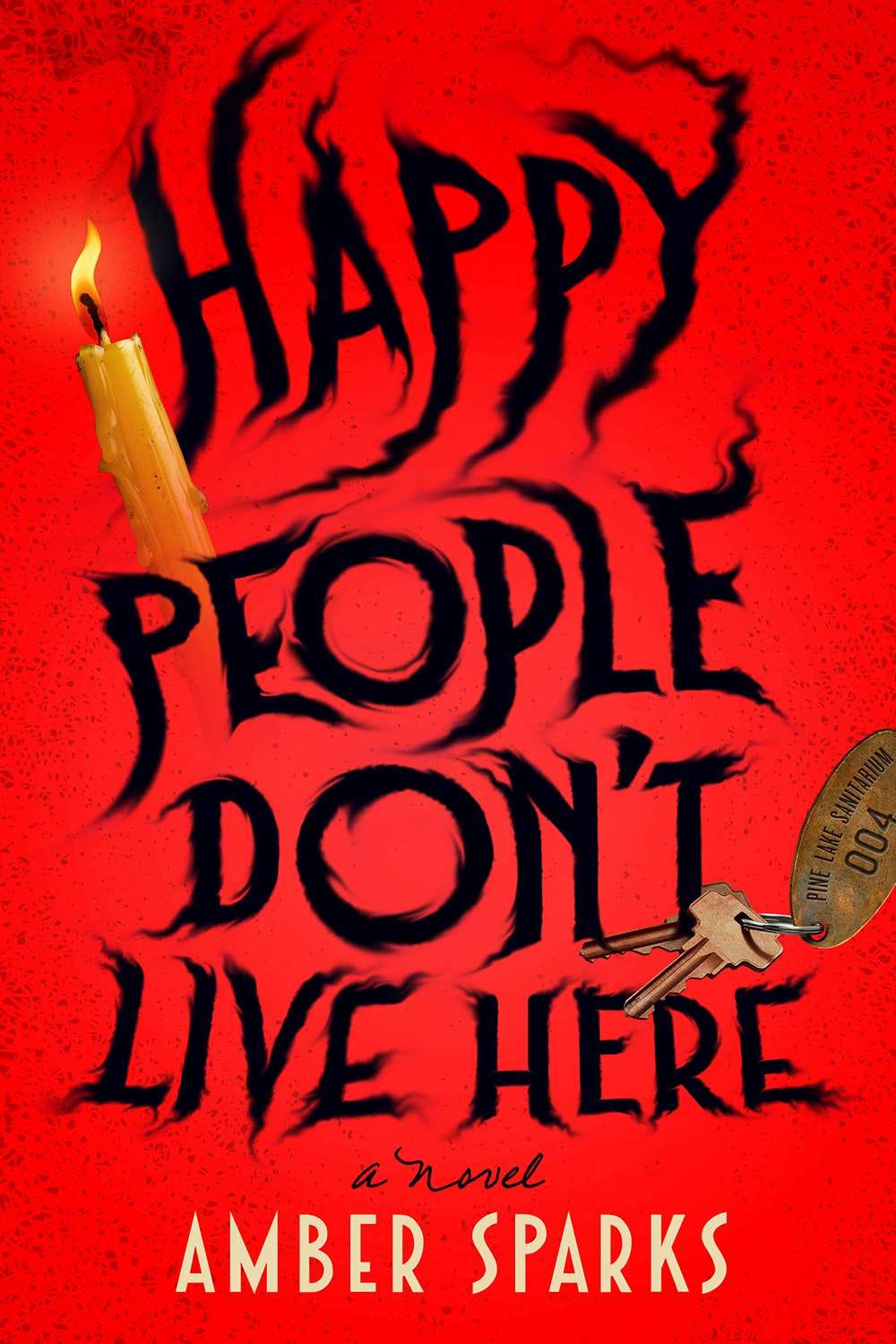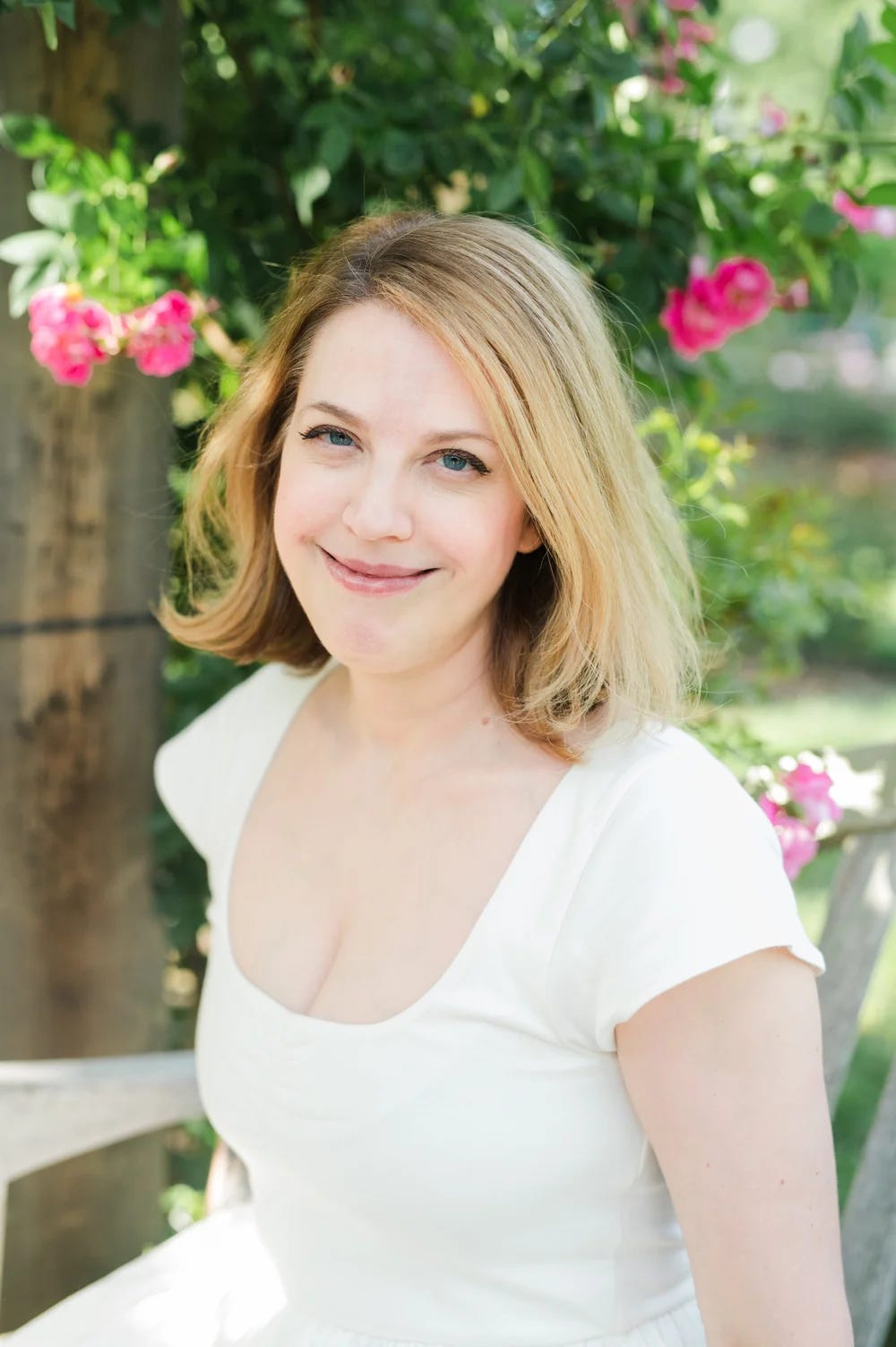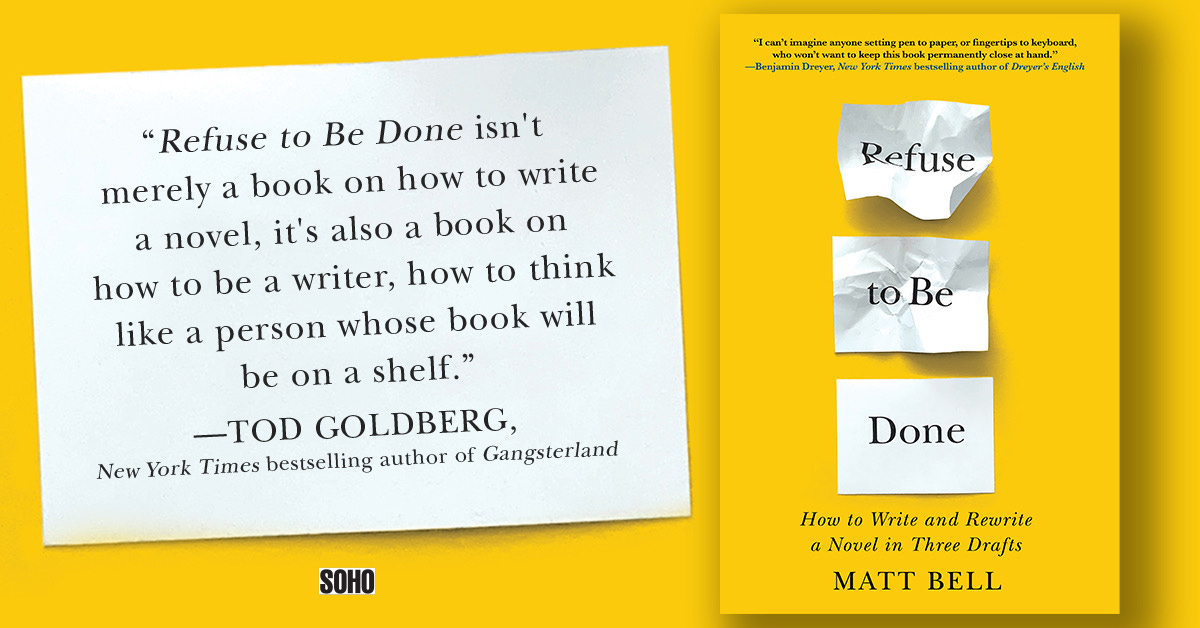#56: "How to Write a Novel with the Kitchen Sink Thrown In" by Amber Sparks, author of HAPPY PEOPLE DON'T LIVE HERE
Amber Sparks
Hello friends! This month, I’m excited to share a guest craft essay by Amber Sparks, long-time friend and one of my favorite writers, whose highly anticipated debut novel Happy People Don’t Live Here is out today from Liveright.
Here’s the jacket copy for Happy People Don’t Live Here:
Just past the edge of summer, Alice and her daughter, Fern, arrive at the Pine Lake Apartments―a former sanatorium occupied by an ensemble of peculiar neighbors and a smattering of ghosts. Among the living: the Mermaid Lady, who performs in a nightclub fish tank; the building’s handyperson, moonlighting as a medium; and an awkwardly charming professor of medieval studies. Fern alone is acquainted with the undead, who pass like troubled clouds through the apartments, humanity mostly lost ages ago. For the determinedly private Alice, Pine Lake seems the perfect place at the edge of the world to hide herself and her daughter―until the day Fern finds a dead body in the dumpster.
Intent on solving the mystery of this discarded corpse, Fern eagerly puts her encyclopedic knowledge of detective novels to good use while dodging warnings from her increasingly paranoid mother. She soon comes to realize that within the strange tapestry of Pine Lake residents, nothing is ever quite as it seems. Her investigation digs up long-buried secrets, including her mother’s, that implicate each of her neighbors . . . and conjures a new one from beyond the grave.
The hotly anticipated debut novel from “master of the fantastic” (Roxane Gay) Amber Sparks, Happy People Don’t Live Here is an unforgettable portrait of family―whether by birth or by chance or by choice―and the sometimes dangerous myths we make to keep ours together.
I had the good luck to read this novel twice—once in the middle of Amber’s writing process and once at the very end, right before the book went to print—and I loved it both times. Amber is a smart, funny storyteller, and I hope you’ll check out her novel, whether you’re new to her work or already a fan of her excellent story collections like 2021’s And I Do Not Forgive You: Stories and Other Revenges.
Happy pub day, Amber! Thanks so much for sharing this look at your process!
How to Write a Novel with the Kitchen Sink Thrown In
I’m an unrepentant maximalist when it comes to writing. If you’re like me, you write what you’re interested in—and by write, I mean open the vast drawer of your novel and throw in any new detail, any new obsession, any stray fact or captivating image or setting you can’t shake. Random story about a battle in Tangiers? In it goes. Pair of sculptural heels a famous Surrealist wore to a ball? Shove those in there, too. Manual on how to make a tourniquet? Torn out image from a magazine of a bare bulb glaring over a tuberculosis patient’s bed? DSM definition of PTSD and a weird little tune the soldiers would sing in retreat in WWI? Into the drawer, all of it, any of it.
But now that the drawer is shut, if bulging a little, the question pops up: what do you DO with all of that stuff? You can’t possibly write a novel with all of that shoved in, right?
And you can’t (unless maybe you’re David Markson or W.G. Sebald), not really. If you write this way, like me, you now have to open the drawer back up and start pulling stuff out and organizing it, tossing things out, using a little alchemy to turn shoes into hats and Tangiers into Mars. And how do you do that? I’ve extended this drawer metaphor farther than is really responsible in a practical craft essay; I should probably explain what I really do when I’m writing a first draft with the kitchen sink thrown in.
First off, I’d say that if you don’t HAVE to write like this, you really, really shouldn’t. Your life will be so much happier, your writing practice so much more sane. If you’re the kind of person who knows exactly what your story will be and where it will take you, what characters will be there and what they’ll be doing and wearing and saying? You should write that orderly draft and thank the writing gods to be so blessed. You don’t even need a drawer, maybe just an envelope. (I’m so sorry for all the metaphors, it’s a maximalist thing.)
But if you’re like me, and you now have all this stuff that you need to find ways to use (or not use), here is how I like to unstuff the drawer:
Buy a LOT of notebooks. I currently have notebooks labeled ‘Surrealism,’ ‘Cults,’ ‘Magic,’ ‘Biography,’ ‘Saints,’ and more besides. I also have a general notebook that goes with me everywhere, so that when I’m reading or watching a movie or just eavesdropping on couples at a restaurant, I can quickly jot down dialogue or facts or quotes or snippets of interesting info. I sort it into my various notebooks later.
Get a bulletin board or really big piece of paper or reserve a wall in your house or office or apartment. You know those crazy boards in every detective show, with pictures and tape and string and sticky notes? Make one of those. Don’t show anyone who loves you (unless they really love you) but put your ideas on notes, tape up your torn out pictures, get it all in one place. Then use string or marker or anything you please to make connections. Rearrange. Throw things away (or put them back in the drawer for later.) See what pops up! Are you writing a book about a sanitarium that was busiest in the 1920s? Oh—and look, here’s a picture of a flapper that you found fascinating. Could there be a connection? A character? Draw a line between the soldiers’ song and a sticky note about a nightmare someone is having. Take pictures of your wall, just in case.
Think about the characters you have, and how you can feed them the information you’re gathering. You just heard a cool fact about the Vatican—could it belong to your historian? What if you make him a Papal historian? Don’t be afraid to change your characters’ jobs, backgrounds, personalities—they’re not real people, they’re your puppets and they’re here to do what’s interesting to you. You should never have a boring character! You are not boring!
Jump around in time. Do you have a lot of different things you’d love to use in your novel - but all happening in different eras or years? No problem. Weave in a couple of storylines happening in different eras or years! Or throw in a time traveler. Or if you’re really lazy, like me, just make one character a historian who can be a stand in for you and all the weird stuff you want to share with your readers.
Remember the iceberg. You know, the thing no one mentions in the story, the subtext left unsaid. What can you use that only you know about, to help you understand your characters’ motivations, to create the tone and mood of the novel? Not everything needs to be IN the book, even if it’s kind of in the book.
Pare back. Obviously not every interesting thing you’ve learned between now and the last book can go into this one; that’s not the purpose of a novel even if it feels like it should be when you’re writing it. Most of the stuff on that crazy board or wall is not going into the book. You’ll have to make hard choices about how much to inflict upon your reader; you don’t want them to feel like they’ve walked into a Victorian living room and their eyeballs are on fire and they don’t know where to look. (I mean, I kind of do, but I also realize that is not the optimal reading experience for most people.) When you read your draft, if it feels forced or out of place, it probably is. If the scene feels too stuffed, it probably is. Yank it back out of there. But the good news is, it can always go back in the drawer. The entire premise of my next novel came out of a discarded piece of info I couldn’t use in this one. You never know what might be useful! (See also: hoarder writer.)
Thanks so much for reading! If you’re not already subscribed, please consider doing so by clicking the button below.
Matt Bell’s novel Appleseed (a New York Times Notable book) was published by HarperCollins in July 2021. His craft book Refuse to Be Done, a guide to novel writing, rewriting, & revision, is out now from Soho Press. He’s also the author of the novels Scrapper and In the House Upon the Dirt Between the Lake and the Woods, as well as the short story collection A Tree or a Person or a Wall, a non-fiction book about the classic video game Baldur’s Gate II, and several other titles. His writing has appeared in The New York Times, Esquire, Tin House, Conjunctions, Fairy Tale Review, American Short Fiction, and many other publications. A native of Michigan, he teaches creative writing at Arizona State University.







Amber do you keep handwritten notebooks or binders of women or what? Somehow it seems like I need to resolve this (handwritten notes! or 3-ring binders of printed pages!) but dither.
Love this from Amber. This feels like permission to write the crazy, full of stuff book I've wanted to write!